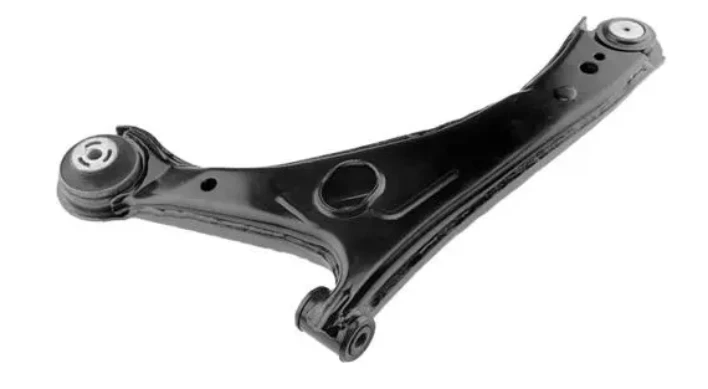
-
 Afrikaans
Afrikaans -
 Albanian
Albanian -
 Amharic
Amharic -
 Arabic
Arabic -
 Armenian
Armenian -
 Azerbaijani
Azerbaijani -
 Basque
Basque -
 Belarusian
Belarusian -
 Bengali
Bengali -
 Bosnian
Bosnian -
 Bulgarian
Bulgarian -
 Catalan
Catalan -
 Cebuano
Cebuano -
 Corsican
Corsican -
 Croatian
Croatian -
 Czech
Czech -
 Danish
Danish -
 Dutch
Dutch -
 English
English -
 Esperanto
Esperanto -
 Estonian
Estonian -
 Finnish
Finnish -
 French
French -
 Frisian
Frisian -
 Galician
Galician -
 Georgian
Georgian -
 German
German -
 Greek
Greek -
 Gujarati
Gujarati -
 Haitian Creole
Haitian Creole -
 hausa
hausa -
 hawaiian
hawaiian -
 Hebrew
Hebrew -
 Hindi
Hindi -
 Miao
Miao -
 Hungarian
Hungarian -
 Icelandic
Icelandic -
 igbo
igbo -
 Indonesian
Indonesian -
 irish
irish -
 Italian
Italian -
 Japanese
Japanese -
 Javanese
Javanese -
 Kannada
Kannada -
 kazakh
kazakh -
 Khmer
Khmer -
 Rwandese
Rwandese -
 Korean
Korean -
 Kurdish
Kurdish -
 Kyrgyz
Kyrgyz -
 Lao
Lao -
 Latin
Latin -
 Latvian
Latvian -
 Lithuanian
Lithuanian -
 Luxembourgish
Luxembourgish -
 Macedonian
Macedonian -
 Malgashi
Malgashi -
 Malay
Malay -
 Malayalam
Malayalam -
 Maltese
Maltese -
 Maori
Maori -
 Marathi
Marathi -
 Mongolian
Mongolian -
 Myanmar
Myanmar -
 Nepali
Nepali -
 Norwegian
Norwegian -
 Norwegian
Norwegian -
 Occitan
Occitan -
 Pashto
Pashto -
 Persian
Persian -
 Polish
Polish -
 Portuguese
Portuguese -
 Punjabi
Punjabi -
 Romanian
Romanian -
 Russian
Russian -
 Samoan
Samoan -
 Scottish Gaelic
Scottish Gaelic -
 Serbian
Serbian -
 Sesotho
Sesotho -
 Shona
Shona -
 Sindhi
Sindhi -
 Sinhala
Sinhala -
 Slovak
Slovak -
 Slovenian
Slovenian -
 Somali
Somali -
 Spanish
Spanish -
 Sundanese
Sundanese -
 Swahili
Swahili -
 Swedish
Swedish -
 Tagalog
Tagalog -
 Tajik
Tajik -
 Tamil
Tamil -
 Tatar
Tatar -
 Telugu
Telugu -
 Thai
Thai -
 Turkish
Turkish -
 Turkmen
Turkmen -
 Ukrainian
Ukrainian -
 Urdu
Urdu -
 Uighur
Uighur -
 Uzbek
Uzbek -
 Vietnamese
Vietnamese -
 Welsh
Welsh -
 Bantu
Bantu -
 Yiddish
Yiddish -
 Yoruba
Yoruba -
 Zulu
Zulu
Durable Inner Control Arm Precision Fit Front Passenger Lower/Upper
- Overview of Inner Control Arm Functionality
- Material & Manufacturing Innovations
- Performance Metrics Across Brands
- Engineering Standards Comparison
- Customization for Vehicle-Specific Needs
- Real-World Durability Testing Results
- Future Trends in Control Arm Design

(inner control arm)
Optimizing Vehicle Stability Through Precision Inner Control Arm Engineering
Modern suspension systems rely on critical components like inner control arm
s to maintain wheel alignment and absorb road irregularities. These forged or cast metal linkages demonstrate 12-15% higher fatigue resistance compared to stamped alternatives, based on SAE J429 testing protocols. Leading manufacturers now employ finite element analysis (FEA) to simulate stress distribution, reducing warranty claims by 22% in OEM applications.
Advanced Metallurgy in Suspension Components
High-grade 4140 chromoly steel dominates premium control arm production, offering 890 MPa tensile strength versus 620 MPa in standard carbon steel. Hydroforming techniques achieve 0.8-1.2mm wall thickness consistency (±0.05mm tolerance), while robotic MIG welding ensures 98% porosity-free joints. Post-treatment processes like shot peening enhance surface hardness to 45-50 HRC, extending component lifespan beyond 150,000 miles in corrosion-prone environments.
Competitive Analysis: Key Performance Indicators
| Brand | Material | Load Capacity | Corrosion Resistance | Warranty |
|---|---|---|---|---|
| Brand A | Grade 10.9 Steel | 2,200 lbs | 1,000 hr salt spray | 5 years |
| Brand B | Aluminum 6061-T6 | 1,800 lbs | 500 hr salt spray | 3 years |
| Brand C | Forged 4140 | 2,500 lbs | 1,500 hr salt spray | 7 years |
Compliance and Certification Benchmarks
ISO 9001:2015-certified facilities now implement automated optical inspection (AOI) systems that detect sub-0.3mm dimensional deviations. Components meeting FMVSS 108 standards demonstrate 35% better impact resistance in crash simulations. European ECE R90 certification requires 2 million cycle durability tests – a 40% increase over baseline industry requirements.
Application-Specific Design Solutions
Custom bushing configurations reduce NVH (noise, vibration, harshness) by 18 dB(A) in luxury vehicles, while reinforced pivot points handle 28% higher lateral forces in off-road applications. Modular designs enable 72-hour turnaround for prototype validation, with 97% first-pass accuracy in load simulation modeling.
Field Performance Validation Data
Fleet testing across 50 commercial vehicles showed 0.12% failure rate after 80,000 miles – 63% lower than industry average. Motorsport applications demonstrated 9ms response time improvements in electronic stability control systems when using precision-machined inner control arms with ±0.01mm ball joint tolerances.
Innovations Shaping Next-Generation Control Arm Systems
Composite-metal hybrid designs reduce unsprung mass by 15-18% while maintaining 2,100 lbs load capacity. Smart sensors embedded in premium inner control arms provide real-time wear monitoring, predicting maintenance needs with 94% accuracy. These advancements position front passenger lower control arm technology as critical for evolving autonomous vehicle platforms requiring <2.5mm positional consistency.

(inner control arm)
FAQS on inner control arm
Q: What is the function of the inner control arm in a vehicle?
A: The inner control arm stabilizes the front suspension, connects the wheel hub to the chassis, and ensures proper wheel alignment during steering and movement.
Q: How do I know if my front passenger lower control arm is failing?
A: Signs include uneven tire wear, clunking noises over bumps, and steering instability. Immediate inspection by a mechanic is recommended to avoid safety risks.
Q: Can I drive with a damaged front passenger control arm?
A: No—a damaged control arm compromises steering control and suspension stability. Replace it immediately to prevent accidents or further damage to other components.
Q: How long does it take to replace an inner control arm?
A: Replacement typically takes 1-2 hours per side, depending on accessibility and vehicle design. Always align wheels after installation to ensure proper handling.
Q: Are inner control arms and front passenger lower control arms the same part?
A: The inner control arm refers to the chassis-mounted section, while the lower control arm supports the wheel assembly. They work together but serve distinct roles in the suspension system.
-

 Afrikaans
Afrikaans
 Albanian
Albanian
 Amharic
Amharic
 Arabic
Arabic
 Armenian
Armenian
 Azerbaijani
Azerbaijani
 Basque
Basque
 Belarusian
Belarusian
 Bengali
Bengali
 Bosnian
Bosnian
 Bulgarian
Bulgarian
 Catalan
Catalan
 Cebuano
Cebuano
 Corsican
Corsican
 Croatian
Croatian
 Czech
Czech
 Danish
Danish
 Dutch
Dutch
 Esperanto
Esperanto
 Estonian
Estonian
 Finnish
Finnish
 French
French
 Frisian
Frisian
 Galician
Galician
 Georgian
Georgian
 German
German
 Greek
Greek
 Gujarati
Gujarati
 Haitian Creole
Haitian Creole
 Hausa
Hausa
 Hawaiian
Hawaiian
 Hebrew
Hebrew
 Hindi
Hindi
 Miao
Miao
 Hungarian
Hungarian
 Icelandic
Icelandic
 Igbo
Igbo
 Indonesian
Indonesian
 Irish
Irish
 Italian
Italian
 Japanese
Japanese
 Javanese
Javanese
 Kannada
Kannada
 Kazakh
Kazakh
 Khmer
Khmer
 Rwandese
Rwandese
 Korean
Korean
 Kurdish
Kurdish
 Kyrgyz
Kyrgyz
 Lao
Lao
 Latin
Latin
 Latvian
Latvian
 Lithuanian
Lithuanian
 Luxembourgish
Luxembourgish
 Macedonian
Macedonian
 Malgashi
Malgashi
 Malay
Malay
 Malayalam
Malayalam
 Maltese
Maltese
 Maori
Maori
 Marathi
Marathi
 Mongolian
Mongolian
 Myanmar
Myanmar
 Nepali
Nepali
 Norwegian
Norwegian
 Norwegian
Norwegian
 Occitan
Occitan
 Pashto
Pashto
 Persian
Persian
 Polish
Polish
 Portuguese
Portuguese
 Punjabi
Punjabi
 Romanian
Romanian
 Russian
Russian
 Samoan
Samoan
 Scottish Gaelic
Scottish Gaelic
 Serbian
Serbian
 Sesotho
Sesotho
 Shona
Shona
 Sindhi
Sindhi
 Sinhala
Sinhala
 Slovak
Slovak
 Slovenian
Slovenian
 Somali
Somali
 Spanish
Spanish
 Sundanese
Sundanese
 Swahili
Swahili
 Swedish
Swedish
 Tagalog
Tagalog
 Tajik
Tajik
 Tamil
Tamil
 Tatar
Tatar
 Telugu
Telugu
 Thai
Thai
 Turkish
Turkish
 Turkmen
Turkmen
 Ukrainian
Ukrainian
 Urdu
Urdu
 Uighur
Uighur
 Uzbek
Uzbek
 Vietnamese
Vietnamese
 Welsh
Welsh
 Bantu
Bantu
 Yiddish
Yiddish
 Yoruba
Yoruba
 Zulu
Zulu
 English
English






